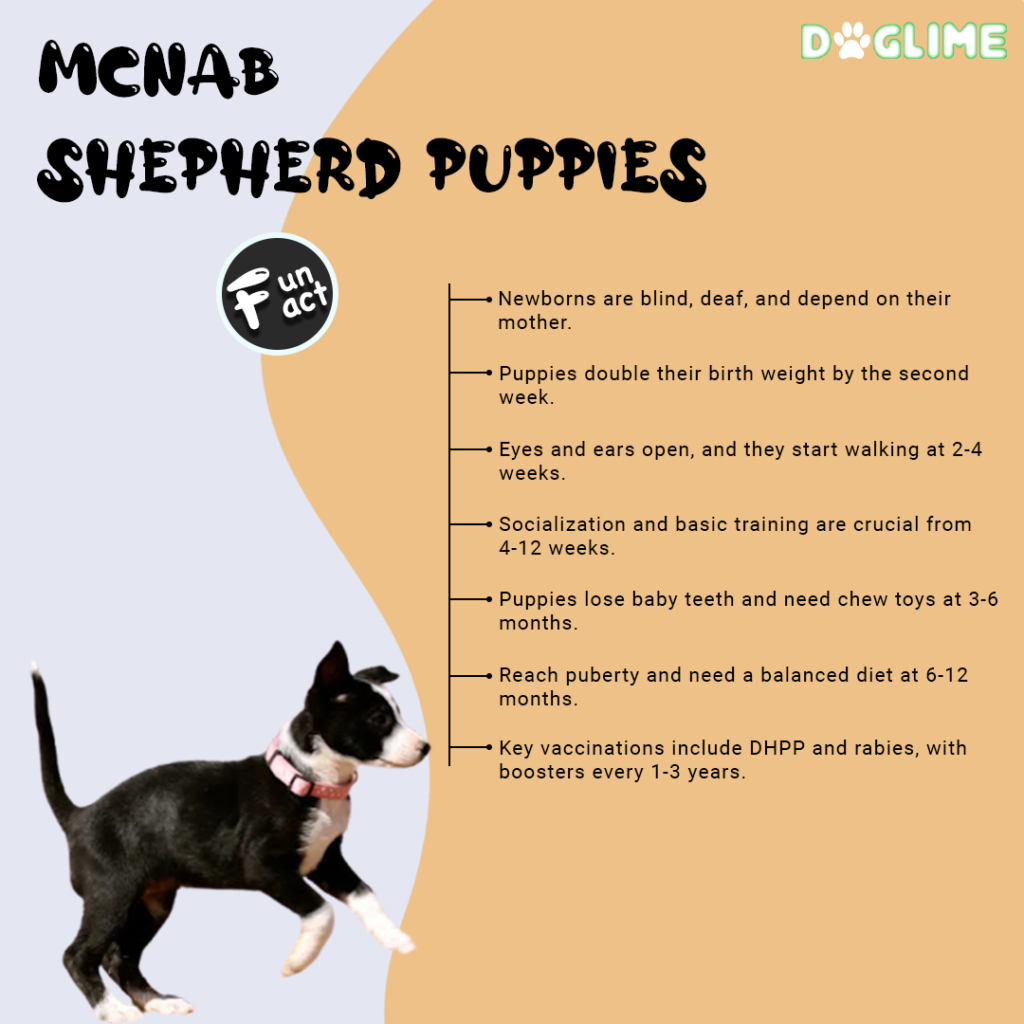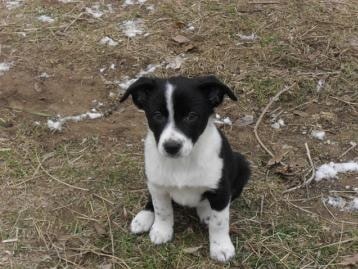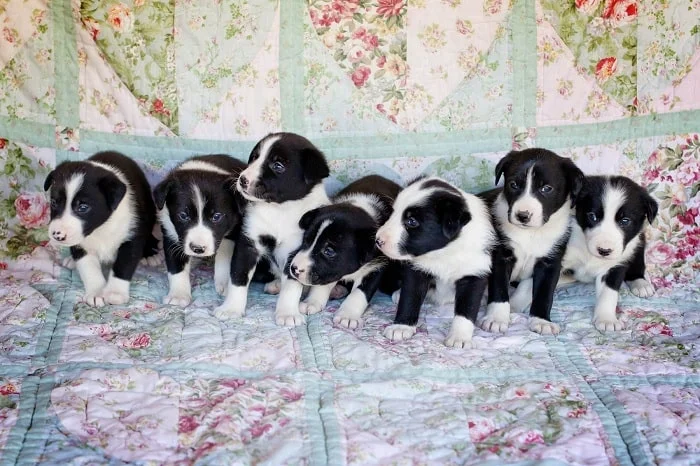McNab Shepherd Puppies
McNab Shepherd is a friendly, energetic, and protective breed that originated in Northern California. They are herding breeds that are used to control livestock and are hyperactive in it than another breed. They are defending and protective of their family members.
While growing, the puppy goes through several changes emotionally and physically. Moreover, you should be alert about each and every step throughout their development. In addition, here is some information on the McNab Shepherd puppy’s growth.
Neonatal Stage (0-2 Weeks)
The newborn baby is blind, deaf, toothless, and weak so, they totally depend on their mother for their needs. Their eyes and ears are completely sealed hence, they’ll automatically open after a few weeks.

Although they are weak, their mother takes care of their feeding and cleaning. All the littermates should stay with each other and their mother as separated ones are likely to die from hypothermia. The mother keeps her children warm as the newborn can’t regulate the heat on its own.
From the second week, the pup starts to gain weight rapidly while weighing double their birth weight. The only activity they do is eat, sleep, and crawl. Since their growth, the pup needs an adequate amount of sleeping which is about 90% throughout the day. You don’t need to worry about the children as they are nourished by their mother. However, look after the mother needs and comfort as she is raising many children at once.
Transitional Stage (2-4 Weeks)
This stage is very exciting as you get to witness several physical and behavioral changes. Firstly, their eyes and ears are opened so, they can see and hear for the first time. But remember their vision is still blurry. Then, they learn to wobbly walk as their legs get stronger than before. Slowly, their new set of baby teeth are seen where can try solid food instead of drinking their mother’s milk.
When baby McNab reaches the third week, they start to make sounds by barking and communicating with their littermates. During the same week, their vision also starts to clear where they respond to movement and light more easily. As they reach the fourth week, they get curious about their surrounding and wants to explore the surrounding. It’s the time where they step out of their whelping box to follow the mother.
Socialization Stage (4-12 Weeks)
Throughout the socialization period, it is very important to make the bond with your dog as their connection stays for a lifetime. The dog now knows the importance of love and affection from their close ones. In addition, they spend more time with their family to know the members and environment better.
Moreover, socialization is the phase where you socialize them to make them more comfortable around other pets and strangers. It also helps them to get less scared around others while making them well-behaved. Take them to different places like parks, gardens, shops, to friends for their socialization. Then teach them leash training which helps you to train them easily while being outdoor.

Image Source: McNab Cattle Dogs ~ Maggie Elliott
When they reach around 8 weeks old, start their basic obedience training, potty training, and housebreaking. Teach them some basic commands at first like ‘come’, ‘sit’, ‘no’, ‘go’, and so on. Remember to have patience while training them as harsh behavior can backfire and make your dog habit worse.
Juvenile Stage (3-6 Months)
During this period, they start to lose their puppy face looking more like an adult. They also start to lose their baby teeth where they face itching and chewing problem. Make sure you buy them chewable toys as they can chew on everything around them.
Moreover, McNab Shepherd is playful and curious about everything. They are full of energy moving around everywhere so, utilize their energy in their training session. By this time, they should have mastered their basic training so, start their advanced training now. You can also involve them in agility, dock diving, disc dogs, flyball, and more.
While training makes sure you introduce them as their leader. If you fail to do so, they can take control and disobey you while training which can make the training sessions tough. In addition, train them about dominance and submission as they can dominate you in the future.
Adolescence Stage (6-12 Months)
In the adolescence stage, your dog hits puberty and starts to act more like an adult dog. They now gain the look of their adult version and get their adult teeth. With training, feed them a properly balanced diet for their proper development. As they are active dog feeding nutritional food is very important.

Image Source: Branchwater
When they reach 6 months, female McNab Shepherd experiences their first heat whereas male dogs are more interested in them. However, breeding shouldn’t be done at this age as it can affect them physically and mentally. The perfect time for their breeding is after 18 months.
Vaccination Chart For McNab Shepherd
| 6 to 8 Weeks | Distemper, parvovirus |
| 10 to 12 Weeks | DHPP (vaccines for distemper, adenovirus, parainfluenza, and parvovirus) |
| 16 to 18 Weeks | DHPP, rabies |
| Every 1 to 2 Years | DHPP |
| Every 1 to 3 Years | Rabies (as required by law) |
Vaccination Cost
The cost for the DDHP vaccines for McNab Shepherd is between $75-$100 and for rabies, it is between $15-$20.
Visit Doglime for different puppy breed information.
Tags










